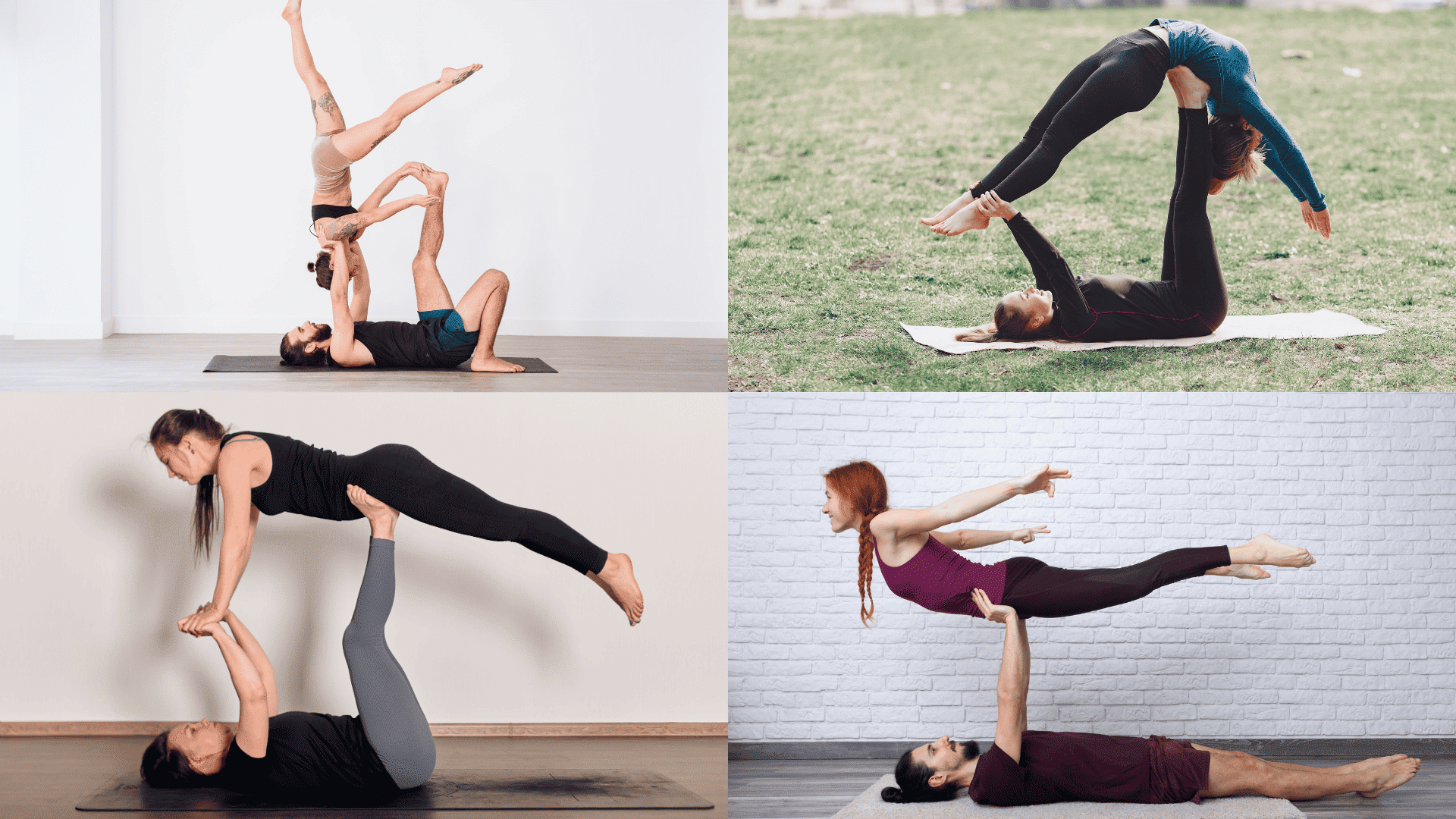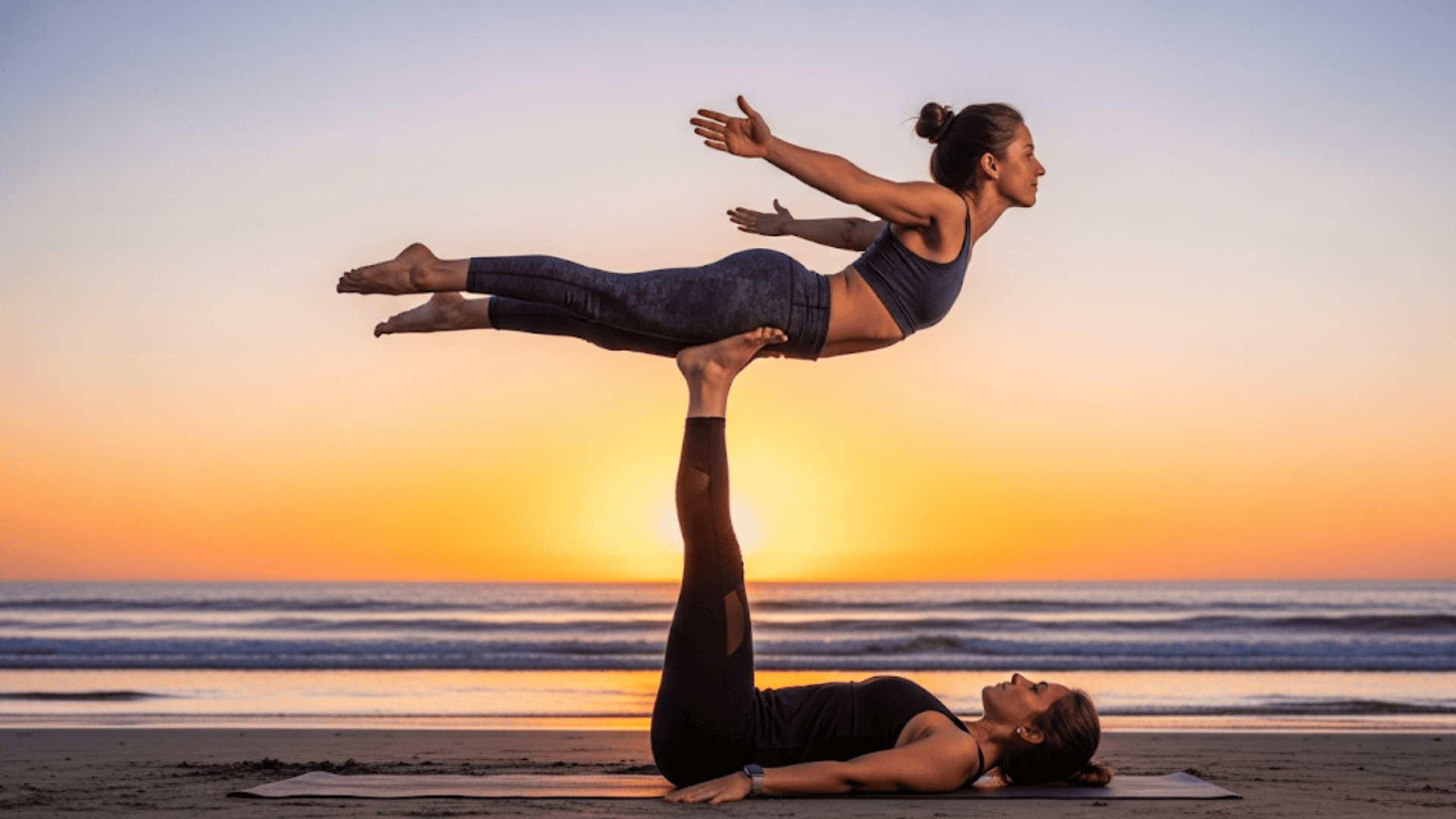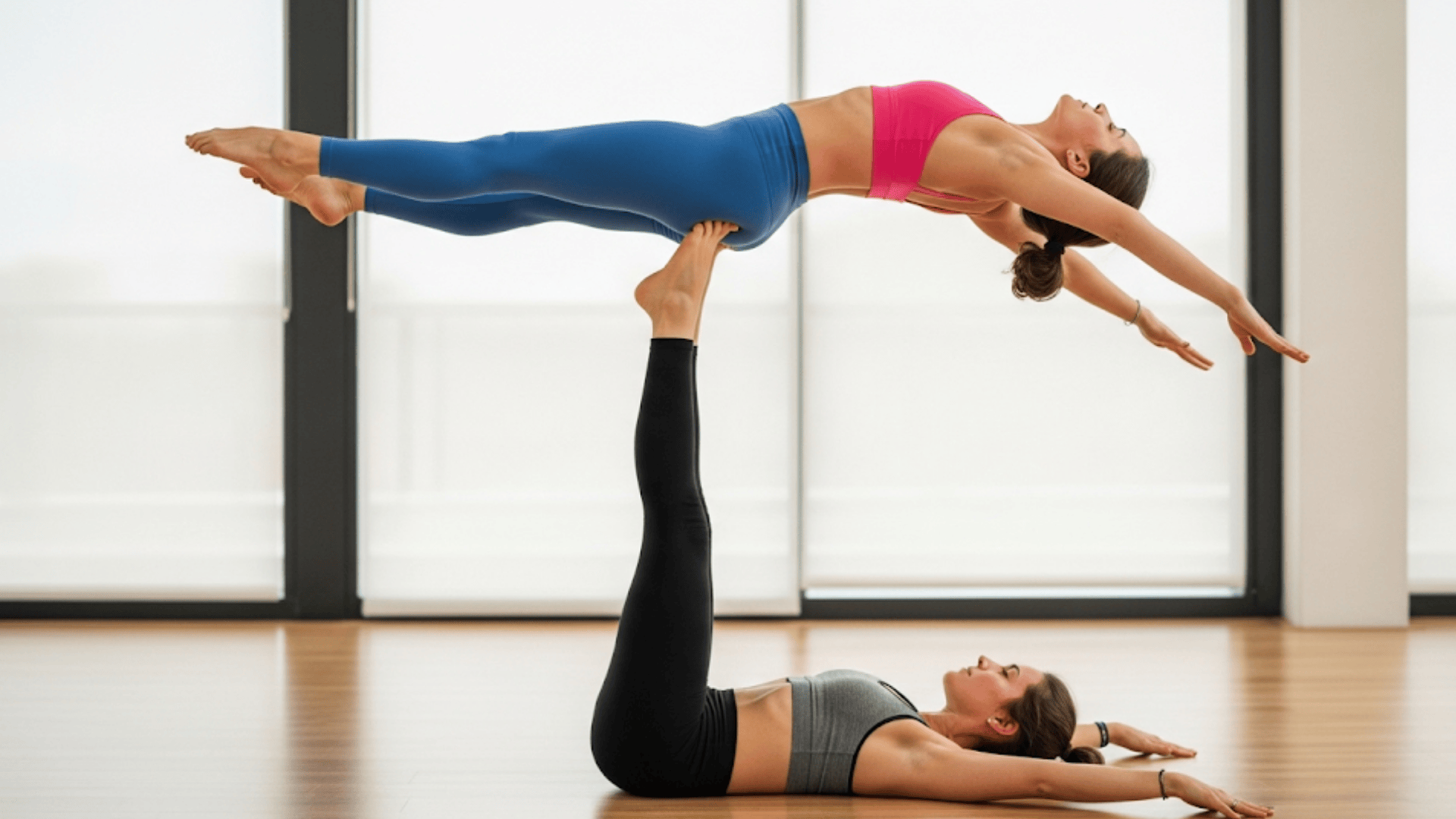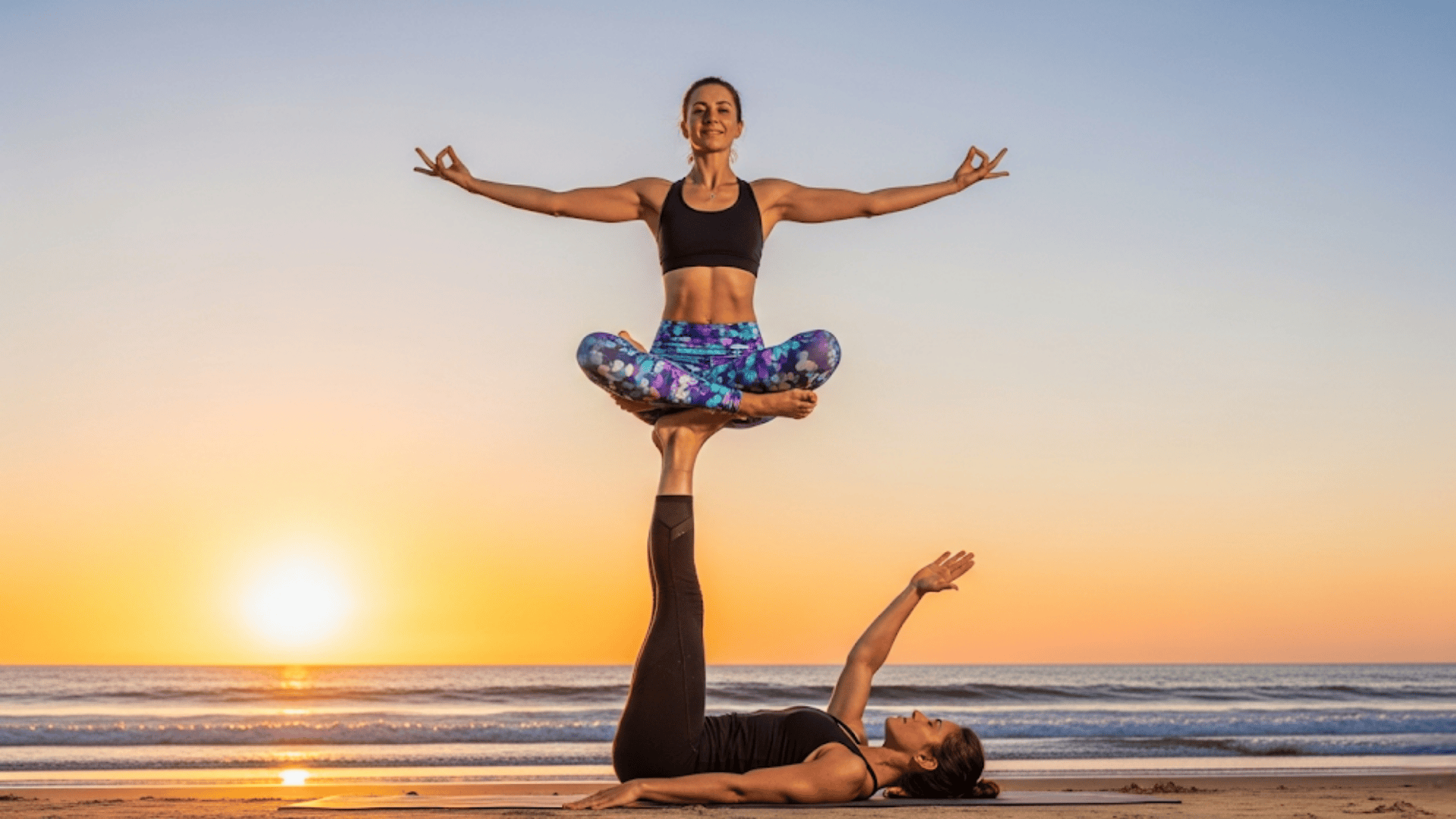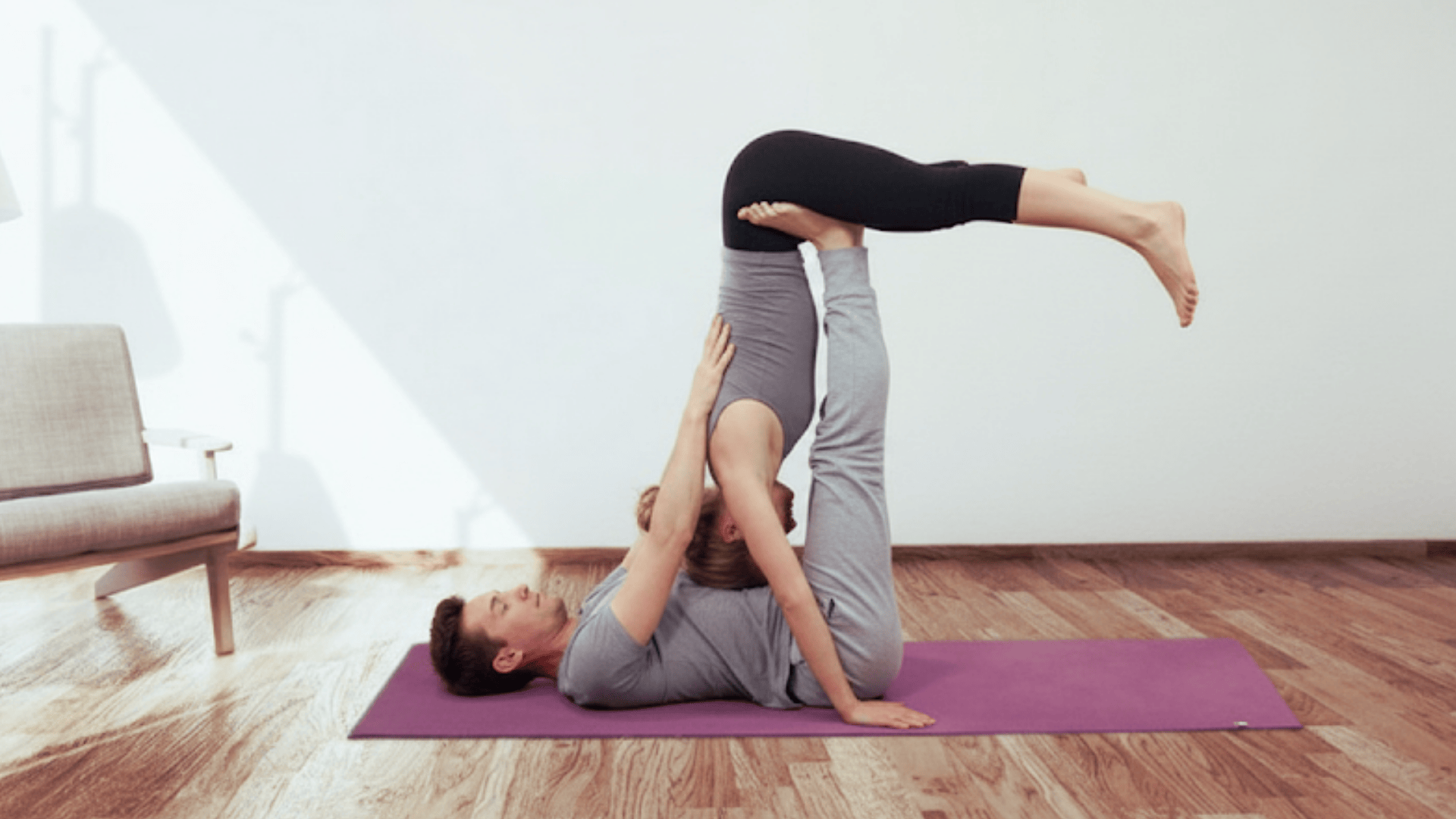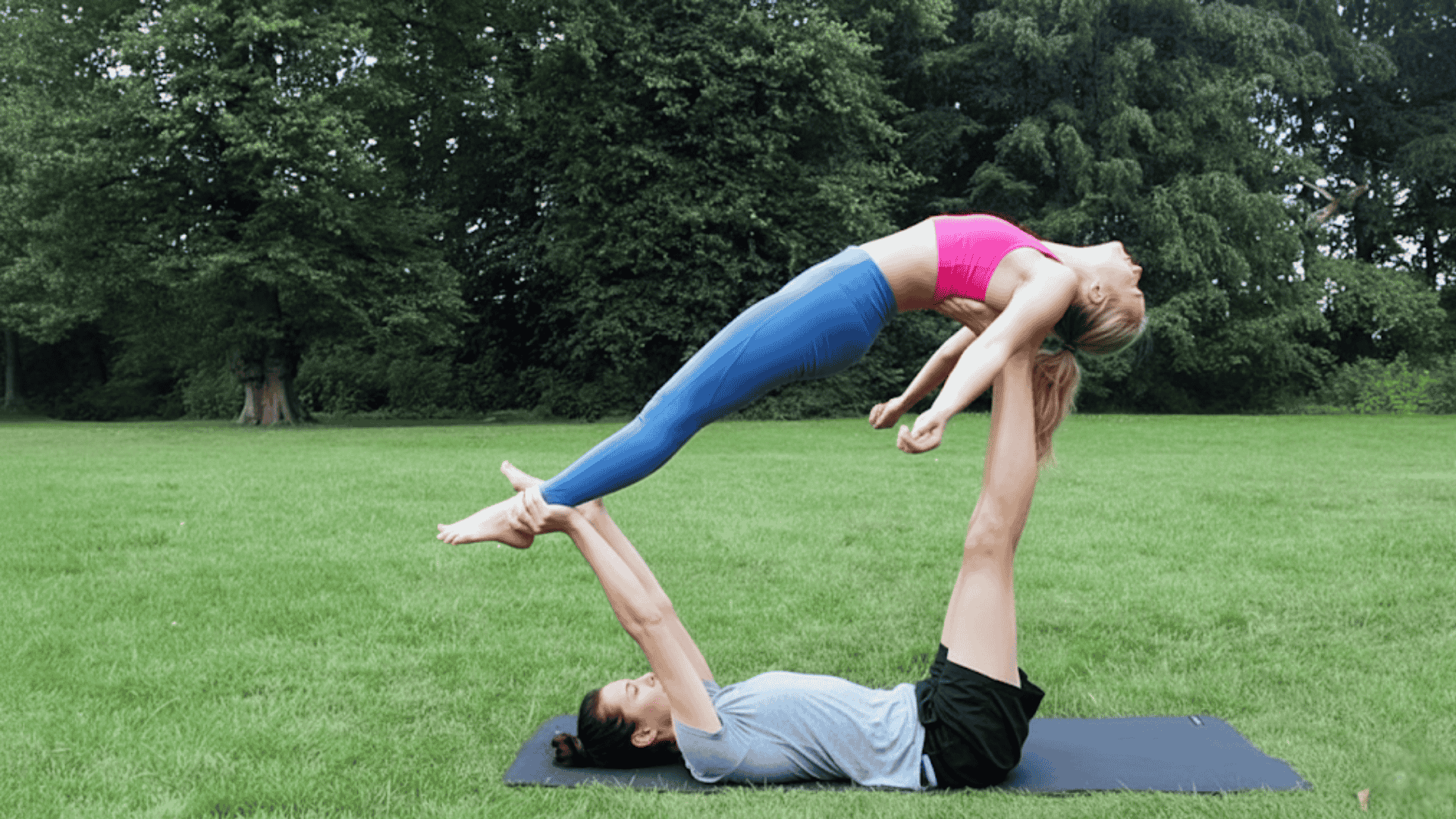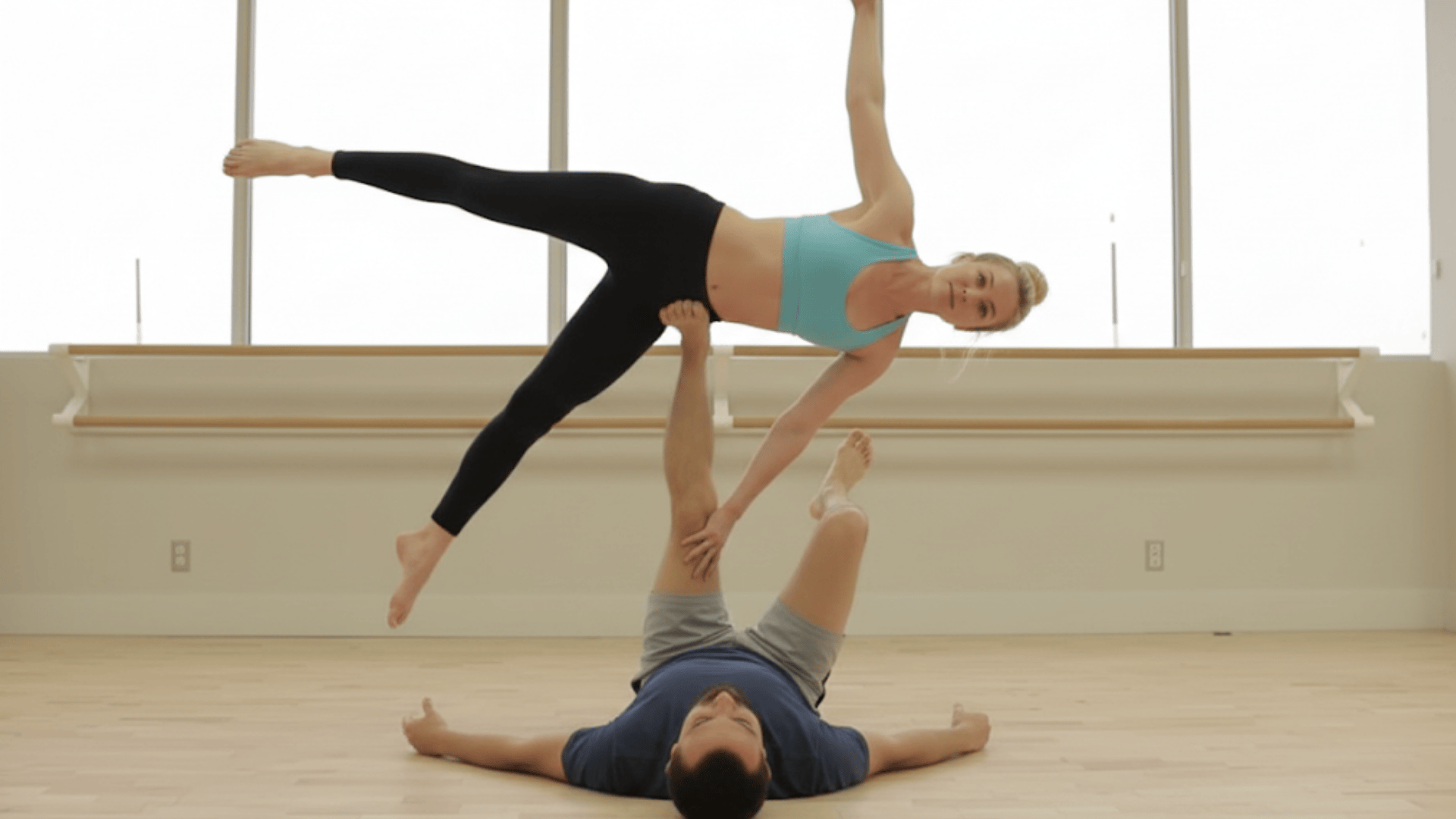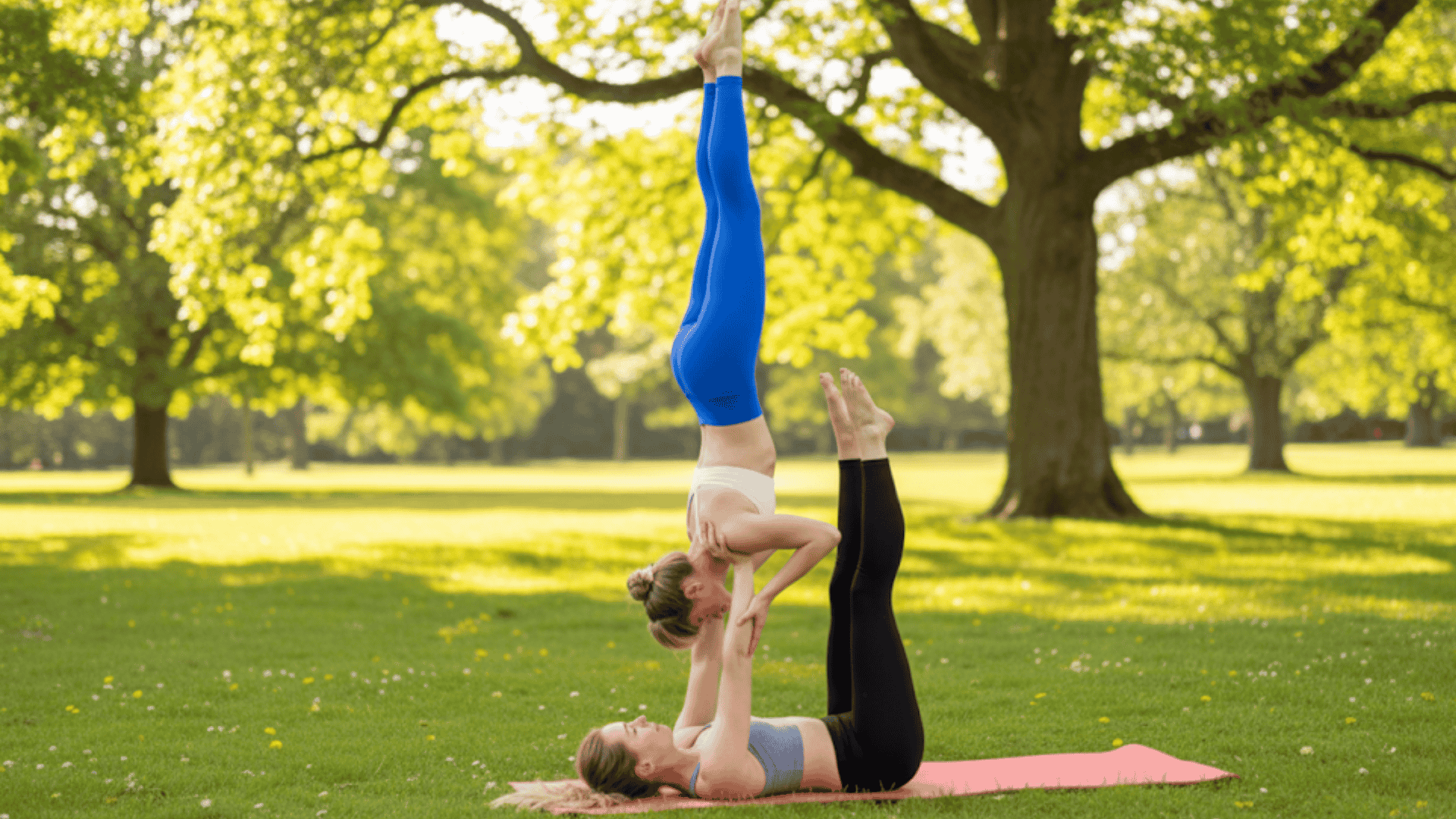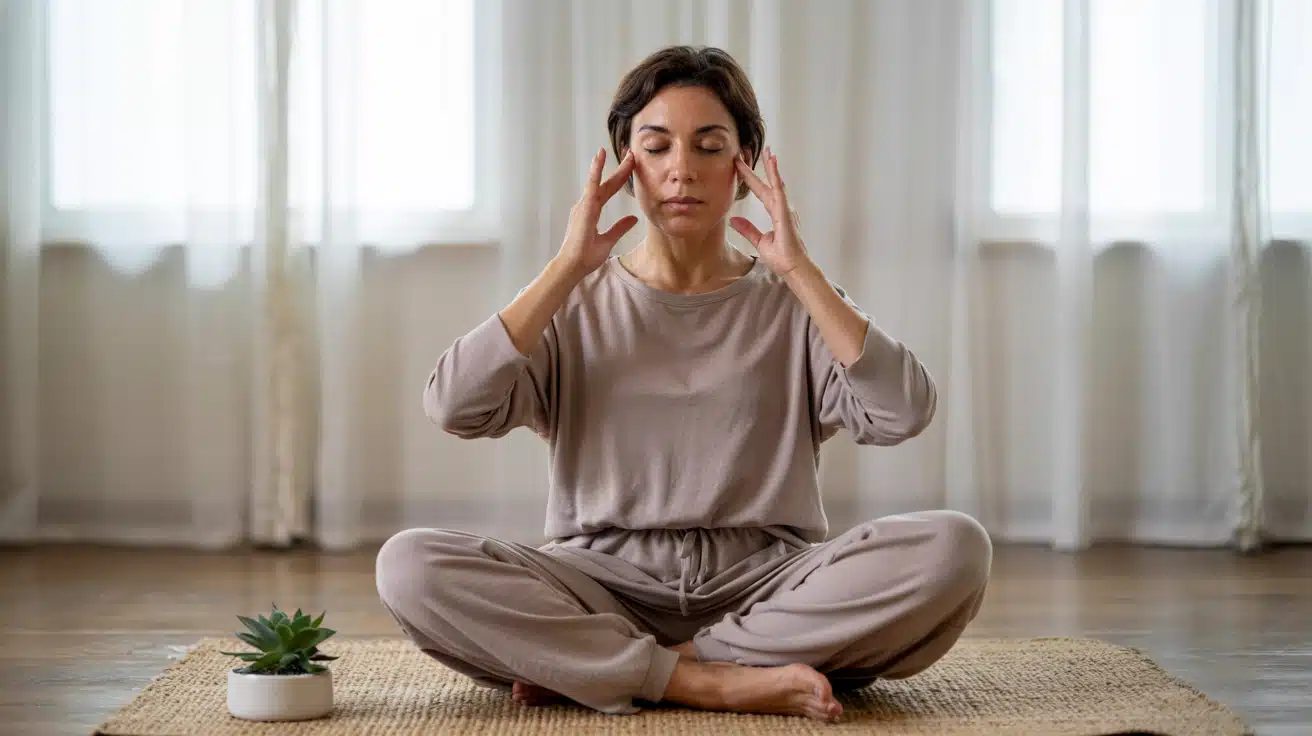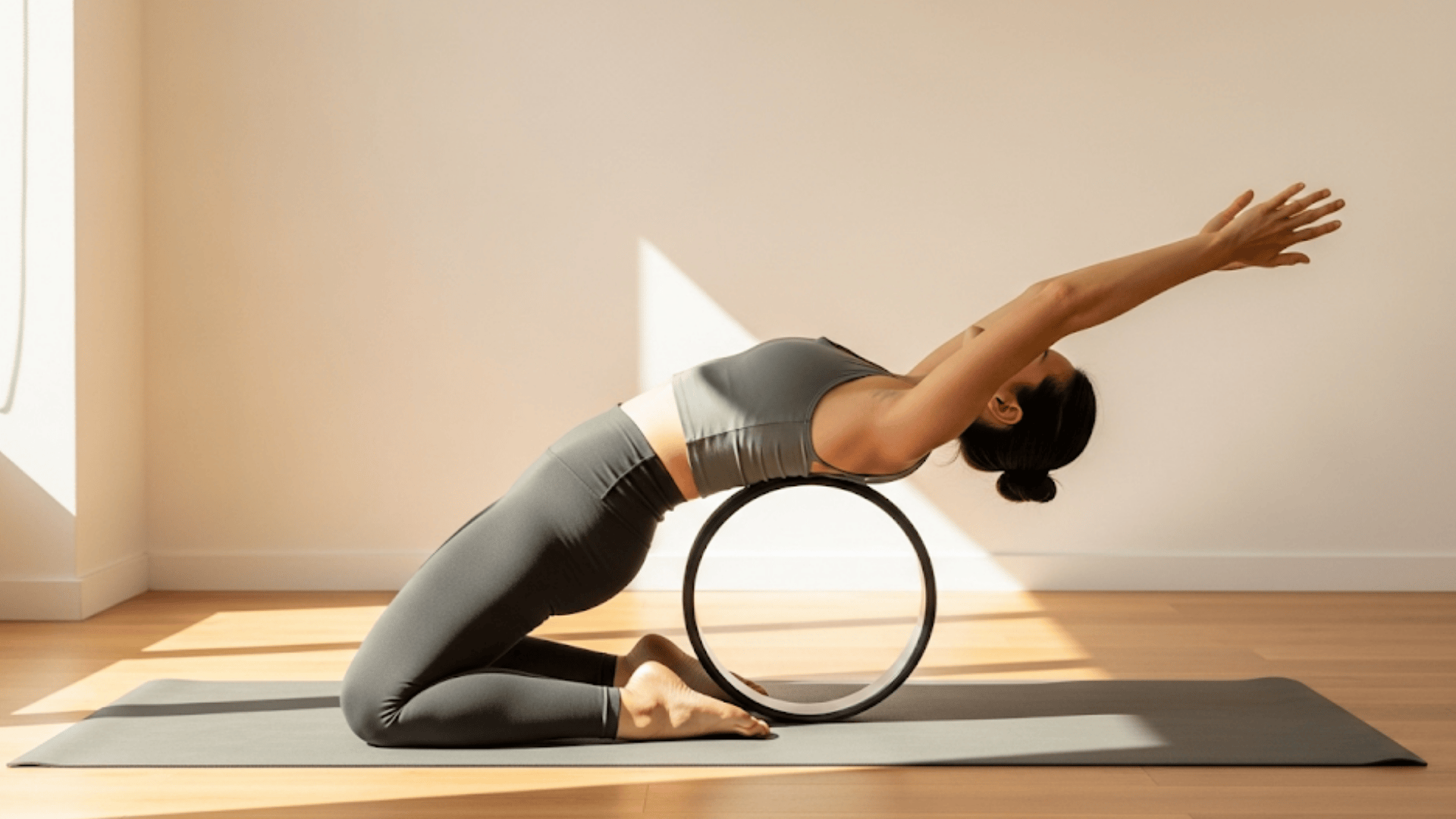Ever watch two people balancing in the air and wonder how they make it look so easy?
Acro yoga combines yoga, acrobatics, and Thai massage into one partner practice that builds strength, trust, and connection.
Most beginners think they need years of yoga experience or circus training to start. That’s simply not true. With the right poses and safety tips, anyone can learn basic acro yoga moves in just a few sessions.
This guide teaches you seven beginner-friendly poses, essential safety steps, and the fastest ways to improve your practice.
You’ll learn the three key roles, common mistakes to avoid, and the best resources for continued learning.
Ready to get started?
What Is Acro Yoga?
Acro yoga combines three powerful practices into one engaging partner activity. This practice builds trust between people while making fitness feel like play. You work with someone else to create poses that look difficult but feel natural with practice.
Acro yoga combines these three elements:
- Yoga: Teaches you proper breathing, staying present, and building flexibility in your body
- Acrobatics: Develops your balance skills, physical strength, and adds playful movement patterns
- Thai Massage: Helps you relax deeply, understand your body better, and release tension
Most acro yoga sessions involve two or three people working together in tandem. Each person has a specific role that helps create safe, successful poses.
Three Key Roles in Acro Yoga
Acro yoga works best when each partner understands their role: the base provides support, the flyer maintains balance, and the spotter ensures safety.
| Role | Description | Best For Beginners Who… |
|---|---|---|
| Base | Lies on the ground, supports the flyer using legs and arms. | Have strength, stability, and enjoy grounding. |
| Flyer | Balances in the air, held by the base. | Have flexibility, balance, and body awareness. |
| Spotter | Stands nearby to guide and prevent falls. | Want to learn first before flying or basing. |
Getting Started Safely
Safety comes first in acro yoga practice. These four steps help you avoid injury and build confidence from your very first session.
Before attempting any acro yoga poses:
- Warm up: Spend 10-15 minutes stretching your hips, shoulders, and core muscles to prepare your body for movement.
- Communicate: Use clear, simple words like “ready,” “flying,” and “coming down” so both partners know what happens next.
- Use a mat: Place thick yoga mats or padding underneath you to cushion any unexpected falls or movements.
- Have a spotter: Ask a third person to watch and guide you, especially when learning new poses for the first time.
7 Beginner-Friendly Acro Yoga Poses
These seven poses form the foundation of acro yoga practice. Start with Bird Pose and work your way through each one at your own pace.
1. Bird Pose (Front Plank)
The base lies flat on its back and bends its knees to a 90-degree angle. They place their feet on the flyer’s hip bones for support.
The flyer leans forward and extends arms like wings while finding balance. This pose teaches basic weight distribution between partners.
Benefits:
- Builds core strength for both base and flyer
- Improves balance and body awareness
- Creates trust between partners
2. Back Bird
Start in Bird Pose position with the base supporting the flyer’s hips. The flyer slowly leans backward while keeping arms extended.
The base maintains steady foot pressure on the hip bones. This pose opens the chest and challenges balance in a new direction.
Benefits:
- Opens chest muscles and improves posture
- Strengthens back muscles
- Builds confidence in backward movement
3. Throne Pose
The flyer sits down onto the base’s feet like sitting in a chair. The base lies on their back with knees bent and feet flat against the flyer’s sitting bones.
The base holds the flyer’s shins or ankles for extra stability. This pose feels secure and comfortable for nervous beginners.
Benefits:
- Builds core strength for both partners
- Teaches proper sitting alignment
- Creates a sense of security for new flyers
4. Folded Leaf
The flyer starts in the Throne Pose, then slowly folds forward over the base’s legs. The base keeps the feet steady on the flyer’s sitting bones while the flyer hangs forward.
Arms can dangle freely or rest on the ground. This pose provides a gentle spine stretch while maintaining safety.
Benefits:
- Stretches the entire back and shoulders
- Releases tension in the neck and spine
- Feels relaxing and restorative
5. Whale Pose
The flyer lies back with the base’s feet supporting their upper back area. The base places feet between the flyer’s shoulder blades for stability.
The flyer can extend arms overhead or rest them at their sides. This pose creates a deep chest opening while maintaining a close connection to the ground.
Benefits:
- Opens chest and front body muscles
- Strengthens the base’s leg muscles
- Improves spinal flexibility
6. Star Pose (Intro Variation)
The base supports the flyer balancing sideways with one hip on the base’s feet. The flyer extends the top arm and leg to create a star shape.
The base can use its hands to help stabilize the flyer’s torso. This pose introduces sideways balancing in a controlled way.
Benefits:
- Improves side body alignment
- Develops lateral balance skills
- Strengthens oblique muscles
7. Shoulder Stand on Hands
The flyer goes into a shoulder stand position while the base supports their legs with their hands. The base sits up and holds the flyer’s calves or ankles steady.
The flyer keeps weight on the shoulders, not the neck. Only try this pose after mastering the previous six poses.
Benefits:
- Builds upper body and core strength
- Increases confidence in inversions
- Improves shoulder stability
Best Resources to Learn Acro Yoga
These trusted resources help beginners learn proper form and safety techniques. Select the format that best suits your learning style and schedule.
1. YouTube Tutorials
- 5 Acro Beginner Poses – DJ Townsel & Keausha Jordan: This clear video breaks down five essential poses with detailed explanations. The instructors show common mistakes and how to fix them step by step.
- Acro Yoga for Beginners: Part 1 – Kateřina Burešová: Features slow-motion demonstrations that help you see exactly how each pose should look. The instructor focuses on safety tips and proper alignment throughout the tutorial.
- 8-Minute solo Acro Yoga for Beginners: Perfect for busy schedules, this quick session teaches basic acro yoga poses that you can practice anywhere. The short format makes it easy to fit acro yoga practice into your daily routine.
2. Books & Guides
- The AcroYoga Guide: For Beginners: Covers fundamental poses with clear photos and step-by-step instructions for each position. Includes safety guidelines and tips for building strength before attempting advanced moves.
- Beginning Acro by Duncan Cosgrove: Written by an experienced instructor, this book explains the philosophy behind acro yoga practice. Features detailed anatomy explanations and modifications for different skill levels.
- ACRO.YOGA.THAI – BASICS: Combines traditional Thai massage techniques with acro yoga poses for a complete practice. Shows how to blend relaxation and strengthening exercises in one session.
- Elements OF Acroyoga: The most thorough resource available, covering everything from basic poses to advanced sequences. Includes troubleshooting guides and answers to frequently asked questions.
Tips for Learning Faster
Accelerate your acro yoga progress with these four straightforward strategies. Consistency and patience lead to better results than rushing through poses.
- Practice with the same partner: Working with one person helps you learn each other’s strengths, balance, and communication style.
- Start simple: Spend at least 3-5 sessions mastering Bird Pose before trying more complex positions, such as Whale or Star.
- Use online tutorials: Watch video guides to see proper form, common mistakes, and step-by-step breakdowns of each pose.
- Join a class: Certified instructors can identify form problems, suggest modifications, and ensure your safety while you learn.
Conclusion
Starting your acro yoga practice doesn’t require perfect flexibility or circus skills. These seven beginner poses provide a solid foundation for building strength, balance, and trust with a partner.
Remember to warm up properly, communicate clearly, and always use a spotter when learning new moves.
Bird Pose and Throne Pose are perfect starting points that teach basic weight distribution safely.
Once you master these fundamentals, you can progress to more challenging positions like Whale Pose or Star Pose at your own pace.
The key to success lies in consistent practice with the same partner and focusing on safety over complexity.
Ready to try acro yoga? Grab a partner, choose your first pose from this guide, and start building your practice today. Share your experience in the comments below!

